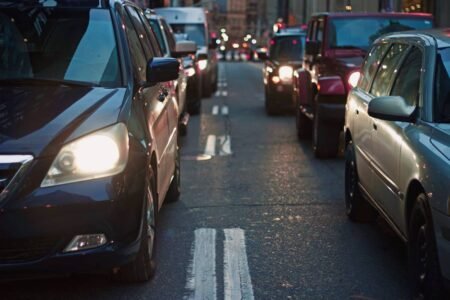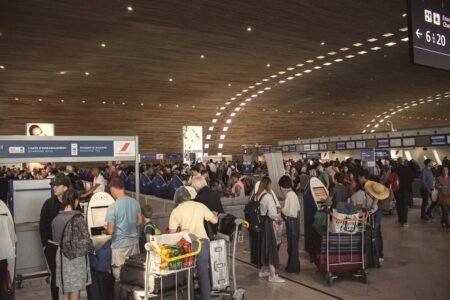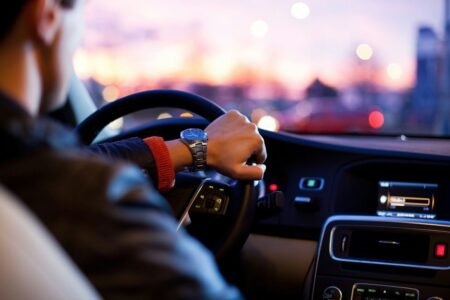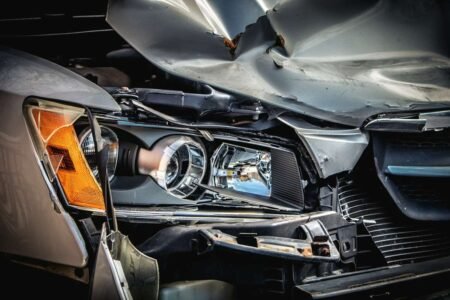The European Commission has announced new measures to get more freight onto Europe’s rivers and canals. Barges are amongst the most climate-friendly and energy efficient forms of transport but currently they only carry about 6% of European cargo each year. The new proposals intend to realise the unused potential of Europe’s 37,000 km of inland waterways. They will enable freight to move more easily and lead to further greening of the sector, as well as encouraging innovation and improving job opportunities.
Advertisement
Key facts and figures
- The top 5 biggest sea ports in the EU are all connected to inland waterways.
- Every year, 140 billion tonne kilometres are transported over EU inland waterways.
- There are over 230 inland ports in the TEN-T network, of which about 75 are part of the Core network. About 40 of these ports combine the status of inland and seaport.
- The CO2 emissions and fuel consumption of a large inland waterway ship are only 1/3 of those of road transport.
- Rotterdam, the largest sea port in the EU transferred in 2010 1/3 of all goods via inland waterways.
- Europe’s navigable inland waterways add up to 37 000 kilometres.
What is the issue?
Transport by rivers and canals is a silent and very energy-efficient way of transporting goods. It plays a key role in bringing a good from Europe’s busy seaports to its final destination. However, the potential of this mode of transport is not fully exploited.
Europe’s rivers still have plenty of capacity to transport more goods and alleviate the congested road and rail axes in some of the most densely populated areas. It can also do more to reduce the emission of harmful air pollutants.
Furthermore, significant parts of the inland navigation sector are facing economic difficulties. Demand is still low, whereas capacity has continued to increase, translating into imbalances between offer and demand, price pressure, decreasing capacity utilisation, reduced employment and profitability.
What are the current policies?
The NAIADES I Action programme from 2006 listed over 30 actions to promote inland navigation. Many of these actions have now been finalised and the programme now needs to be updated. We need to refocus policy on the key issues of improving the economic and environmental performance of the sector.
What is the Commission proposing?
The Commission proposes a new action programme with measures that will improve the framework conditions for the inland waterway sector and will boost the economic and environmental performance of this transport mode.
The NAIADES II programme will facilitate long-term structural changes in the inland waterway transport sector. It also includes short terms actions currently being undertaken by the Commission to address the difficult economic situation of the sector.
The measures of NAIADES II are the following:
Improving infrastructure quality and fostering integration of inland waterway transport into the logistics chain
An efficient infrastructure is the basic condition for inland waterway transport to operate successfully. Inland navigation can only play its full role if inland waterways are well maintained, better connected to other modes of transport, if missing links are filled and if bottlenecks are overcome.
Through the Connecting Europe Facility, the Commission will provide support to improve existing and build new inland waterway infrastructure and will help to upgrade its interconnection with other transport modes. The TEN-T Corridor implementation will ensure that corridors are developed taking into account all modes of transport in a coordinated way.
The Commission will review the deployment of River Information Services (1) taking into account the need to improve data integration across transport modes.
Supporting the smooth functioning of the market and restructuring of the sector and address the need for qualifications, skills and quality jobs
The inland waterway sector is operating under difficult economic circumstances. The fragmentation in the sector is high with 80 % of the fleet is operated by owner-operators. This makes it difficult to match supply with demand and hampers the sector’s ability to reinvest and innovate. Employment in the sector is estimated to have decreased with 10%. The age structure for workers will lead to an increased outflow of workers in the coming decade. In certain market segments, 50 % of the workers are over 50 years old.
The Commission has engaged in a discussion with the sector and the Member States concerned about suitable measures to overcome the difficult situation and support the restructuring of the sector. The Commission also looks at what can be done from the regulatory side to improve the situation. It will re-examine technical requirements for vessels and encourage the early uptake of the use of Liquid Natural Gas (LNG) as an alternative fuel.
The Commission will propose measures to reduce barriers to labour access and mobility, valorise qualifications and careers in the sector, and improve the level playing field.
Greening the sector by reducing emissions and boosting innovation
Compared to other land-based modes of transport, inland waterways are energy-efficient, safe, almost congestion-free and silent. However, progress on reducing air pollutants has been out of tune with this otherwise favourable trend. Uptake of alternative fuels such as LNG may help the sector to catch up with other transport modes.
The Commission will review the emission limits for new engines and explore further emission limits for existing ones. It will also amend the rules to allow the use of LNG as a fuel in inland navigation.
The inland waterway transport regularly comes up with new services and develops new markets. However, the overall innovation rate is low and needs a strong boost. The Commission calls upon the sector to develop a roadmap for research, development and innovation.
The Commission will provide support for greening and innovation from the Horizon 2020 and the Connecting Europe Facility programmes and has tabled a proposal as part of the NAIADES II package to allow the sector’s reserve fund to support investment in reducing emissions. Support action by the Commission can be complemented by dedicated programmes at the Member State level.
A new approach to governance
NAIADES II will address the overlap of legal frameworks and competencies in the inland waterway sector. It entails institutional and legislative measures and aims at a more targeted cooperation with other international bodies in order to address duplication of rules.
The first steps have been set through an administrative arrangement between the Commission services and the Central Commission for the Navigation of the Rhine and a new proposal for a Directive adopted as part of the NAIADES II package, replacing the Directive 2006/87/EC on technical requirements for inland waterway vessels and allowing to enact uniform standards.
What are the benefits?
The whole European economy will benefit as inland waters will be better exploited.
The inland waterway operators will benefit from a clearer legal framework, from improved operating conditions, from framework conditions that stimulate innovation and from the increased possibility to use budgets contributed by the sector to a reserve fund. At the same time, the industries and users of inland navigation will benefit from quality inland navigation services.
European citizens will enjoy environmental and health-related benefits as inland navigation will become more attractive from an economic and environmental perspective.
Further information:
Inland waterways – Revision of NAIADES
Infographics on EU ports
Notes
1 : River Information Services (RIS) and its related projects involve traffic management infrastructure on the inland waterway network. Specifically, this includes the establishment of an interoperable, intelligent traffic and transport system to optimise the existing capacity and safety and improve interoperability with other transport modes.







